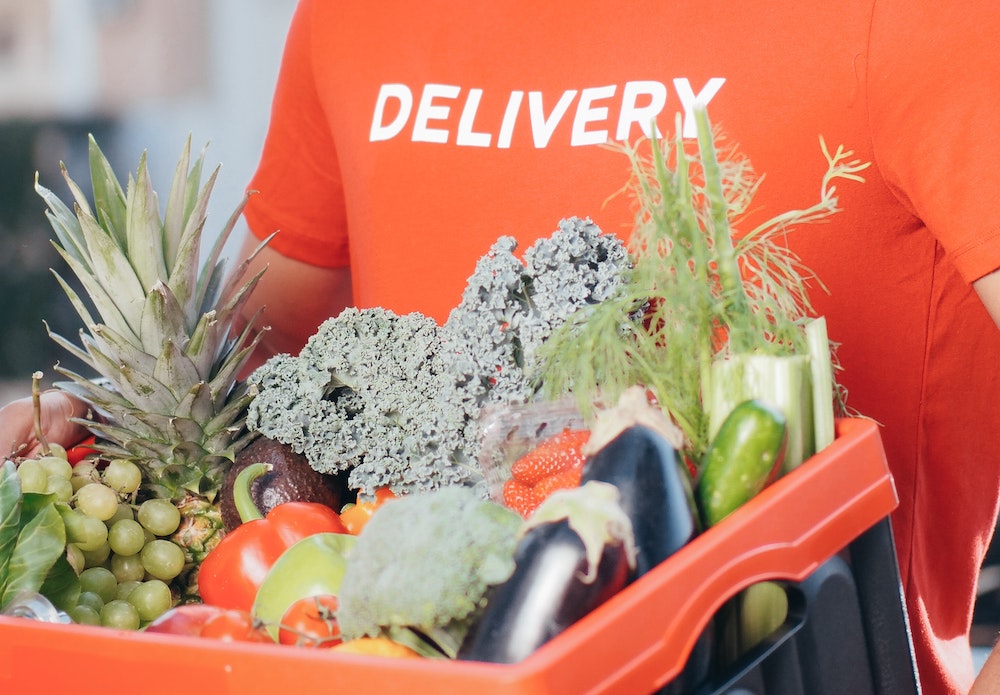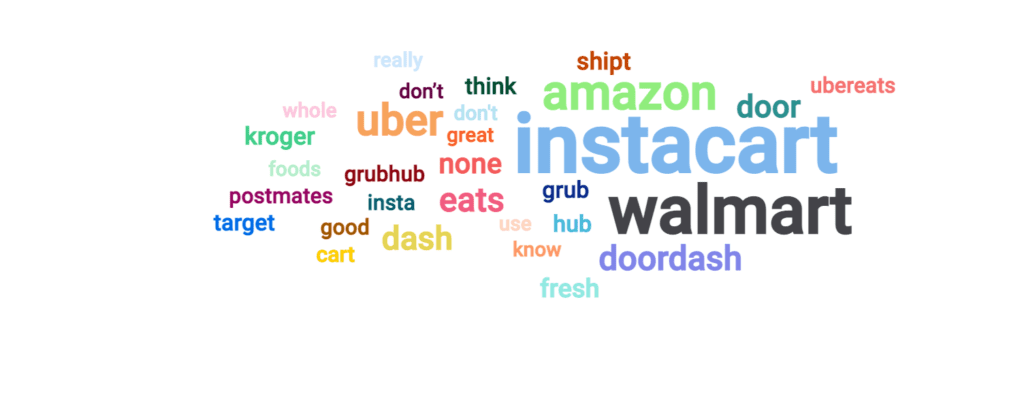Are on-demand grocery brands delivering?

On-demand grocery delivery services came into their own during the pandemic—nothing says ‘social-distanced grocery shopping’ like ordering from your sofa and ‘leave it on the doorstep’!
And if you’ve spent any time on public transport or glancing at billboards, you can’t have failed to notice their widespread ad activity and overt competition.
As the world slowly returns to normal, what’s the state of the on-demand groceries industry? What do consumers want from these services—and how can brands make sure they deliver?
To find out, we used Attest to question consumers in the UK and US. You can dive into the data yourself with our insights dashboard.
And if you’d like our summary of the findings then sit back and we’ll bring it straight to your door (no delivery charge!)…
Top 3 takeaways from the research
- Challenger brands are struggling to break through. Brand awareness among newer market entrants is low compared to Uber Eats (US & UK), Deliveroo (UK) and Instacart (US). Just like 2017-19’s mattress wars, it’s not just expensive to play the game, it’s almost prohibitively expensive to enter the game at all.
- Users of on-demand grocery delivery services prioritize convenience and speed. Sustainability and the working conditions in the ‘gig economy’ are big news in the media, but not significant factors in most customer-level decision-making.
- Delivery cost is a major driver—and a key deterrent. Low delivery cost is an important priority for many users, while many potential customers are put off by high delivery costs.
Results
Big names dominate unprompted awareness
It’s unsurprising that mega supermarket brands and major players in on-demand delivery figure so prominently in consumers’ consciousness. Years of growth—and vast streams of external investment and new funding, to act ahead of that growth—work wonders for brand equity.
When asked to name the brands that come to mind when thinking about on-demand grocery delivery, Americans were most likely to cite Instacart, Walmart, Uber Eats and DoorDash (however, despite DoorDash’s industry domination, they aren’t the clear leaders in consumers’ eyes). While in the UK, the responses Uber Eats, Deliveroo, Tesco and Asda were most common.

Since supermarkets are such a fixture of consumers’ lives, perhaps newer grocery delivery brands could explore partnerships as a way to establish themselves in the market. That’s how Ocado—now a giant of global grocery technology and robotics—started in life: an exclusive 2002 partnership with Waitrose (that’s one of the UK’s most upmarket supermarkets).
And when we followed up with a list of grocery delivery brands (excluding supermarkets), the dominance of the incumbents becomes even starker. A massive 90.6% in the UK were familiar with Uber Eats and 88.8% with Deliveroo, while Uber Eats (86.2%), Instacart (78.2%) and Postmates (56.4%) were most dominant in the US.
There’s then a huge void in awareness to the next most-recognized brands, where we start to see the new grocery delivery challengers.
In the UK, Getir took the challenger top spot (23.5% of respondents recognize the name), followed by Gorillas (22.5%), Zapp 10.6%, Jiffy (7.0%), Beelivery (6.8%), Gopuff (5.6%), Weezy (4.6%) and Fancy (1.0%).
In the US, Gopuff is the leading challenger with 24.6% knowing the name, followed by Getir (23.5%), Gorillas (7.6%), Jokr (6.4%) and Fridge No More (5.8%).
All of this goes to show the size of the task that challenger brands are up against. It’s hard (and expensive) to get to just 1.0% awareness, and a daunting task to cross that awareness void to compete with the dominant incumbents at >50.0% awareness. Working on levels of unprompted awareness should be a priority for new market entrants.
Is it even possible to break through over time? In a word, yes.
Getir and Gorillas are engaging in extensive venture capital fundraising to break into the delivery top-tier.
Gousto wisely plays the long game by being more data-driven and taking aim more accurately than its competitors.
Emma even managed to come through mattress wars with less damage than many others, by discovering real customer needs in each target segment, exploring new channels, and being smart with pricing.
Make it easy, but make it snappy
The features considered most important to existing users of on-demand grocery delivery platforms were ‘quick delivery’ and ‘low delivery costs’ in both countries. Much less significant to users are sustainable products and packaging, which came bottom of the rankings on both sides of the Atlantic.
Introductory offers clearly work well in this sector: 28.1% of Brits and 23.3% of Americans said they first used a service for this reason. Of those who had never used an on-demand grocery delivery service before, ‘money off your first order’ was the most popular answer when asked what might encourage them to start, backed by 44.8% in the UK and 34.5% in the US.
Delivery fees could be make-or-break
We already know that low delivery costs are important to existing users, and around half of non-users (50.2% in the UK and 48.9% in the US) say that cheaper delivery costs could persuade them to use these services for the first time. In the UK, delivery fees are the joint top reason people don’t order on-demand groceries, and delivery fees ranks second in the US.
Interestingly, Americans attach much more importance to doing their shopping in person compared to Brits. More than half of Americans (57.3%) say they’ve been held back from ordering on-demand because they prefer the experience of in-person shopping. A smaller (but still significant) 38.2% of Brits said the same.
It’d be wise for on-demand brands to drill down into what it is about in-person shopping people relish—is it the abundance of choice, the social aspect, the muzak? Guess what—market research can reveal the answers…
There’s a real challenge for brands here: keeping delivery costs low while covering costs and making some margin at the same time. A classic answer here is to shift the ‘rent’ in the value chain—where delivery companies would make less money from consumers, and more money from restaurants or partnerships.
If we continue to see huge amounts of new funding that fuels new entrants, this sector will remain hotly competitive. If that funding falls away, we’ll start to see a different form of competition for the first time; based on better serving customer needs (rather than just spending as fast as possible, to grow as fast as possible).
This research shows some of the gaps and the basis of competition—from real consumer preferences and demand—that will dictate who wins or loses. That’s where research becomes powerful: unlocking who will win next, and why.
You can find out more about this research through our insights dashboard (US results and UK results), and if you want to know more about how Attest can help you use data to make great decisions—and then deliver on them— get in touch!
See what Attest can do for you
Speak to our team to understand how we can help you to get high quality insights from your target audiences, fast.
Book a demoTell us what you think of this article by leaving a comment on LinkedIn.
Or share it on:
